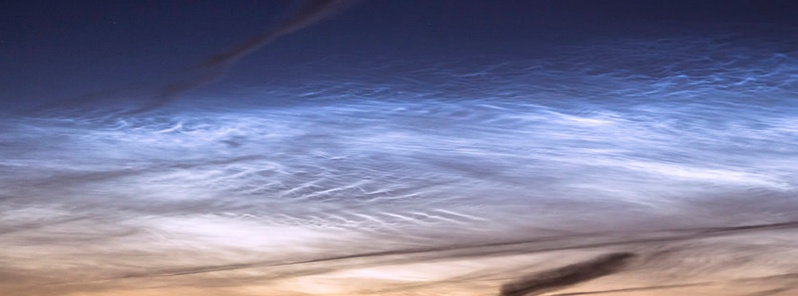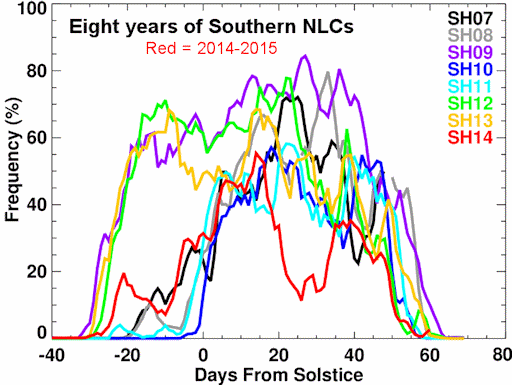Strange behavior of Antarctic noctilucent clouds

The southern noctilucent clouds (NLCs) season is over now, but looking back over the entire season reveals something unexpected.
In an 8-year plot of the Antarctic noctilucent cloud frequencies, the 2014/15 season is clearly different from the rest, SpaceWeather reports.
"This past season was not like the others," notes Cora Randall, a member of the AIM science team and the chair of the Department of Atmospheric and Oceanic Sciences at the University of Colorado.
"The clouds were much more variable, and there was an enormous decrease in cloud frequency 15 to 25 days after the summer solstice. That's when the clouds are usually most abundant."

These data come from the AIM spacecraft, which was launched in 2007 to monitor NLCs from Earth orbit. The curves show the abundance ("frequency") of the clouds vs. time for 120 days around every southern summer solstice for the past 8 years.
Previous research shows that NLCs are a sensitive indicator of long-range teleconnections in Earth's atmosphere, which link weather and climate across hemispheres. The strange behavior of noctilucent clouds in 2014/15 could be a sign of previously unknown linkages.
"Preliminary indications are that it is indeed due to inter-hemispheric teleconnections," says Randall. "We're still analyzing the data, so stay tuned."
Attention now turns to the northern hemisphere, where the season for NLCs typically begins in May.
Source: SpaceWeather
Featured image: Noctilucent clouds by Pawel Maryanov (CC – Flickr)

Whats the significance?
it looks to me like the sort of beautifull positive strangeness we should learn to expect from the photon vortex energy.